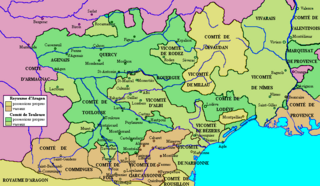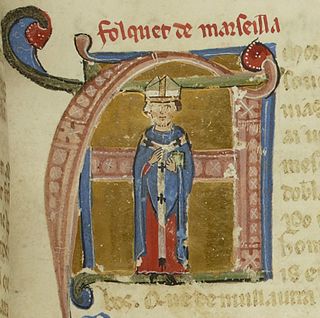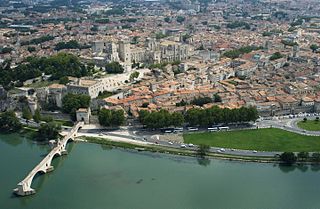
Catharism was a Christian dualist or Gnostic revival movement that thrived in some areas of Southern Europe, particularly what is now northern Italy and southern France, between the 12th and 14th centuries. The followers were known as Cathars and are now mainly remembered for a prolonged period of persecution by the Catholic Church, which did not recognise their belief as being Christian. Catharism appeared in Europe in the Languedoc region of France in the 11th century and this is when the name first appears. The adherents were sometimes known as Albigensians, after the city Albi in southern France where the movement first took hold. The belief system may have originated in Persia or the Byzantine Empire. Catharism was initially taught by ascetic leaders who set few guidelines, and, thus, some Catharist practices and beliefs varied by region and over time. The Catholic Church denounced its practices including the Consolamentum ritual, by which Cathar individuals were baptized and raised to the status of "perfect".

Pope Benedict XII, born Jacques Fornier, was Pope from 30 December 1334 to his death in April 1342. He was the third Avignon Pope. Benedict was a careful pope who reformed monastic orders and opposed nepotism. Unable to remove his capital to Rome or Bologna, he started the great palace at Avignon. He decided against a notion of Pope John XXII by saying that souls may attain the "fulness [sic] of the beatific vision" before the Last Judgment. Whilst being a stalwart reformer, he attempted unsuccessfully to reunite the Orthodox Church and Catholic Church, almost 3 centuries after the Great Schism; he also failed to come to an understanding with Louis IV, Holy Roman Emperor.

The Albigensian Crusade or the Cathar Crusade was a 20-year military campaign initiated by Pope Innocent III to eliminate Catharism in Languedoc, in southern France. The Crusade was prosecuted primarily by the French crown and promptly took on a political flavour, resulting in not only a significant reduction in the number of practising Cathars, but also a realignment of the County of Toulouse in Languedoc, bringing it into the sphere of the French crown and diminishing the distinct regional culture and high level of influence of the Counts of Barcelona.
Consolamentum, known as heretication to its Catholic opponents, was the unique sacrament of the Cathars. As Christians, Cathars believed in original sin, and—like Gnostics—believed temporal pleasure to be sinful or unwise. The process of living thus inevitably incurred "regret" that required "consolation to move nearer to God or to approach heaven. It occurred only twice in a lifetime: upon confirmation in the faith and upon impending death. It was available to both men and women who made a commitment to the faith. Following the ceremony the consoled individual became a "Cathar Perfect".
Pierre Clergue was a priest in the village of Montaillou, France in the late thirteenth and early fourteenth century. He is the central figure in Emmanuel Le Roy Ladurie's 1975 book Montaillou, a pioneering work of microhistory. Since then he has appeared in a number of other histories, and as the villain in the fictional work The Good Men by Charmaine Craig.

Jean Pellissier was a shepherd in the Comté de Foix in the early fourteenth century, made notable by appearing in Emmanuel Le Roy Ladurie's Montaillou. Pellissier was born in Montaillou to a family of poor peasants. One of a number of sons he became a shepherd as the family land would not enough to sustain all of them. At the age of twelve, as was the custom, he began tending his family's flock of sheep. Soon he was apprenticed in Tournon to a woman named Thomassia, likely a widow. He worked there for five or six years before returning home and living with his widowed mother and his four brothers Raymond, Guillaume, Bernard, and Pierre.
Raymonde Arsen née Vital was a servant in the Comté de Foix in the early fourteenth century. She was made notable by appearing in Emmanuel Le Roy Ladurie's Montaillou. Born in Prades d'Aillon to a poor peasant family in 1306 she left to work in the home of Bonet de la Coste in town Pamiers.
Raymonde Testanière, known as Vuissane, was a servant in the Comté de Foix in the late thirteenth and early fourteenth centuries. She is known to us through her testimony recorded on the Fournier Register and examined in Emmanuel Le Roy Ladurie's Montaillou. Vuissane was a servant in the Belot household from 1304 to 1307. She was also a mistress to Bernard Belot and had two children with him. Vuissane reported to have hoped to marry Bernard, but he was only interested in a wife from a wealthier family and eventually married Guillemette Benet. He also rejected Vuissane as she did not believe in Albigensianism.
Béatrice de Planissoles, was a Cathar minor noble in the Comté de Foix in the late thirteenth and early fourteenth century. She was born circa 1274, probably in the mountain village of Caussou.

Arnaud Baille/Sicre was a cobbler in the Comté de Foix in the late thirteenth and early fourteenth century. A number of details about his life are known to us through the Fournier Register, and Emmanuel Le Roy Ladurie's analysis of those records.
Bernard Clergue was the town bayle of the village of Montaillou in the south of France in the late thirteenth and early fourteenth centuries. A great deal about his life is recorded in the Fournier Register and has been studied by historians, most notably Emmanuel Le Roy Ladurie in his book Montaillou.
Prades Tavernier was a weaver and then Cathar parfait in the Comté de Foix in the late thirteenth and early fourteenth century. Tavernier was originally from Prades d'Aillon, and he was named after the town. There he became a successful and prosperous weaver. Though unmarried, he had a bastard daughter named Brune Pourcel.

Caussou is a commune in the Ariège department in the Occitanie region in southwestern France.

The Château de Montaillou is a ruined castle in the French village of Montaillou, in the Ariège département. The village of Montaillou, standing on the slope of Mount Allion, was made famous in Emmanuel Le Roy Ladurie's history, Montaillou, village occitan.

Cathar castles is a modern term used by the tourism industry to denote a number of medieval castles of the Languedoc region. Some had a Cathar connection, in that they offered refuge to dispossessed Cathars in the thirteenth century. Many of these sites were replaced by new castles built by the victorious French Crusaders and the term is also applied to these fortifications despite having no connection with Cathars. The fate of many Cathar castles, at least for the early part of the Crusade, is outlined in the contemporary Occitan "Chanson de la Croisade", translated into English as the "Song of the Cathar Wars".

The Council of Toulouse (1229) was a Council of the Roman Catholic Church called by Folquet de Marselha the Bishop of Toulouse in 1229AD. The council forbade laity to read vernacular translations of the Bible.


















